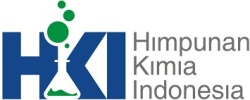Microemulsion of methanol extract of Tridax procumbens flower and its antibacterial activity against Streptococcus mutans and Enterococcus faecalis
Abstract
Tridax procumbens (commonly known as Gletang flower) is a medicinal plant recognized for its antibacterial potential and is widely distributed across various habitats such as rice fields, plantations, and roadsides. Phytochemical screening of its methanolic flower extract revealed the presence of secondary metabolites, including alkaloids, flavonoids, steroids, phenols, terpenoids, and tannins, all of which contribute to its biological activities. This study aimed to develop a microemulsion formulation of T. procumbens methanolic extract and to evaluate its antibacterial activity against Streptococcus mutans and Enterococcus faecalis, two major oral pathogenic bacteria. The microemulsion was prepared using the sonication method and characterized by assessing its pH, transmittance, viscosity, physical stability, and particle size using a particle size analyzer. Antibacterial activity was tested using the Kirby-Bauer disk diffusion method. The results indicated that the microemulsion had particle sizes ranging from 300–1000 nm and demonstrated significantly higher antibacterial activity compared to the crude extract, suggesting improved solubility and enhanced bioactivity of the active compounds. This formulation holds promise as a natural antibacterial agent for the prevention of oral infections.
Downloads
References
S. V. Debeturu, S. S. Tulandi, G. A. . Tiwow, dan V. I. Paat, “Uji aktivitas analgesik ekstrak etanol daun songgolangit (Tridax procumbens L.) terhadap tikus putih (Rattus norvegicus),” Trop. J. Biopharm., vol. 2, no. 2, hal. 158–169, 2021.
V. V. Ingole, P. C. Mhaske, dan S. R. Katade, “Phytochemistry and pharmacological aspects of Tridax procumbens (L.): A systematic and comprehensive review,” Phytomedicine Plus, vol. 2, no. 1, hal. 100199, 2022, https://doi.org10.1016/j.phyplu.2021.100199.
V. Gubbiveeranna dan S. Nagaraju, “Ethnomedicinal, phytochemical constituents and pharmacological activities of Tridax procumbens: A review,” Int. J. Pharm. Pharm. Sci., vol. 8, no. 2, hal. 1–7, 2016.
S. Kumar, A. Prasad, … S. I.-I. J. of, and undefined 2012, “Pharmacognostical, phytochemical and pharmacological review on Tridax procumbens Linn,” Researchgate.Net, no. March 2010, [Daring]. Tersedia pada:
S. Ghosh, S. Nandi, dan T. Basu, “Nano-Antibacterials Using Medicinal Plant Components: An Overview,” Front. Microbiol., vol. 12, no. February, hal. 1–16, 2022, https://doi.org10.3389/fmicb.2021.768739.
A. Gupta, H. B. Eral, T. A. Hatton, dan P. S. Doyle, “Nanoemulsions: Formation, properties and applications,” Soft Matter, vol. 12, no. 11, hal. 2826–2841, 2016, https://doi.org10.1039/c5sm02958a.
Y. Yahia, M. A. Benabderrahim, N. Tlili, M. Bagues, dan K. Nagaz, “Bioactive compounds, antioxidant and antimicrobial activities of extracts from different plant parts of two Ziziphus Mill. species,” PLoS One, vol. 15, no. 5, hal. 1–16, 2020, https://doi.org10.1371/journal.pone.0232599.
E. da S. Monteiro et al., “Characterization and Determination of the Antibacterial Activity of Baccharis dracunculifolia Essential-Oil Nanoemulsions,” Antibiotics, vol. 12, no. 12, hal. 1–12, 2023, https://doi.org10.3390/antibiotics12121677.
M. H. Satari, B. Situmeang, I. P. Yuda, dan D. Kurnia, “Antibacterial Diterpenoid Against Pathogenic Oral Bacteria of Streptococcus Mutans ATCC 25175 Isolated From Sarang Semut (Myrmecodia Pendans),” J. Kim. Val., vol. 5, no. 2, hal. 218–223, 2019, https://doi.org10.15408/jkv.v5i2.8864.
J. A. Nenohai, “Uji Aktivitas Bakteri Propionibacterium acnes pada Metabolit Sekunder Temulawak ( Curcuma xanthorrhiza Roxb ) terlarut dalam VCO (Virgin Coconut Oil ),” vol. 4, hal. 85–94, 2024; https://doi.org/10.35508/jbk.v4i1.15463.
W. J. A. Musa, N. Bialangi, dan A. K. Kilo, “Evaluation of Polyphenolic Content, Antioxidant and Anti-diabetic Activity of Different Solvent Extracts of Sauauria vulcani Korth. Leaves,” vol. 24, no. 2, hal. 1–12, 2025.
D. Diniatik dan R. S. Anggraeni, “Antibacterial (Staphylococcus aureus and Escherichia coli) and Antifungal (Saccharomyces cerevisiae) Activity Assay on Nanoemulsion Formulation of Ethanol Extract of Mangosteen Leaves (Garcinia mangostana L.) as Fruit Preservative,” J. Food Pharm. Sci., vol. 9, no. 1, hal. 351–365, 2021, https://doi.org10.22146/jfps.1008.
R. Syaflida, A. Riza, H. Rusdy, dan S. P. Hasibuan, “Daya Antibakteri Streptococcus Mutans Menggunakan Ekstrak Daun Pegagan (Centella asiatica (l.) urban),” MAHESA Malahayati Heal. Student J., vol. 3, no. 12, hal. 4117–4126, 2023, https://doi.org/10.33024/mahesa.v3i12.12457.
A. P. Pertiwi, “Potensi Antibakteri Ekstrak Daun Pelawan Merah (Tristaniopsis Merguensis Griff.),” J. Kesehat. Poltekkes Kemenkes RI Pangkalpinang, vol. 7, no. 1, hal. 17–21, 2019.
Widyawati, U. Arma, O. Fadriyanti, B. Situmeang, dan S. Silaban, “Antibacterial activity test of different parts of gletang (tridax procumbens) from west sumatera, indonesia,” Rasayan J. Chem., vol. 15, no. 4, hal. 2382–2386, 2022, https://doi.org10.31788/RJC.2022.1547084.
A. F. Pradana, F. R. Fauji, dan I. Farlina, “The potential of methanol extract nanoemulsion from gletang flower (Tridax procumbens) as an antibacterial agent against pathogenic bacteria,” hal. 0–4, 2024.
 This work is licensed under a Creative Commons Attribution-ShareAlike 4.0 International License. Copyright is retained by the authors, and articles can be freely used and distributed by others.
This work is licensed under a Creative Commons Attribution-ShareAlike 4.0 International License. Copyright is retained by the authors, and articles can be freely used and distributed by others.

 Sri Wijayanti(1*)
Sri Wijayanti(1*)












